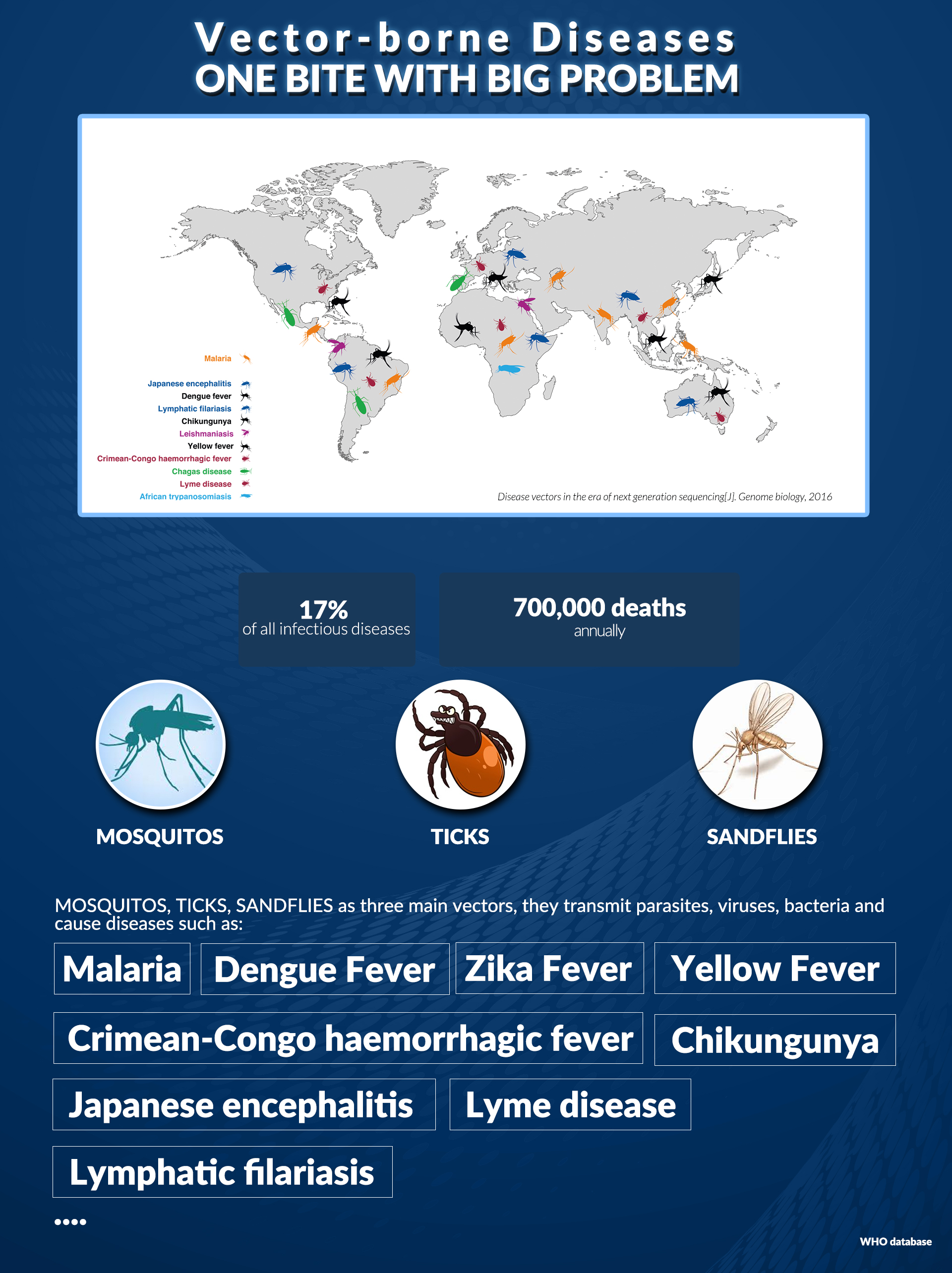
Vectors are living organisms that can transmit infectious pathogens between humans, or from animals to humans. When a vector becomes infectious, it can transmit the pathogen for the rest of its life during each subsequent bite/blood meal.
Vector-borne diseases are human illnesses caused by parasites, viruses, and bacteria transmitted by vectors. According to WHO statistical data, vector-borne diseases account for more than 17% of all infectious diseases, causing more than 700,000 deaths annually.
The burden of these diseases is highest in tropical and subtropical areas. Since 2014, significant outbreaks of dengue, malaria, chikungunya, yellow fever, and Zika have afflicted populations, claimed lives, and overwhelmed health systems in many countries. Other diseases such as Chikungunya, leishmaniasis, and lymphatic filariasis cause chronic suffering, life-long morbidity, disability, and occasional stigmatization.
Why are vector-borne diseases emerging in more and more regions?
Lots of changes will affect the living environment of vectors, which will have different influences on the transmission of diseases. Here will list the most important and most discussed aspects.
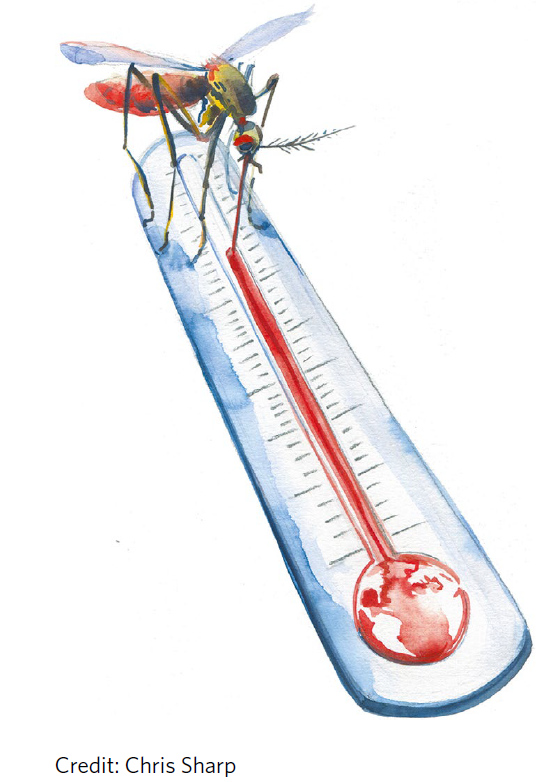
1. Climate and climate changes
Climate can affect the transmission dynamics, geographic spread, and re-emergence of vector-borne diseases through multiple pathways, including direct effects on the pathogen, the vector, non-human hosts, and humans. Arthropods and other vectors are ectotherms; it is expected that vector abundance, survival, and feeding activity will increase with increasing temperature, as will the rate of development of the pathogen within the vector.
Climate change affects vector-borne disease transmission and spread, and its impacts are likely to worsen. GRID-Arendal, an official United Nations Environment Programme (UNEP) collaborating center, made a forecast: the malaria parasite Pf will likely be able to spread into new areas(red on the map) by 2050 based on the Hadley Centre model's high scenario.
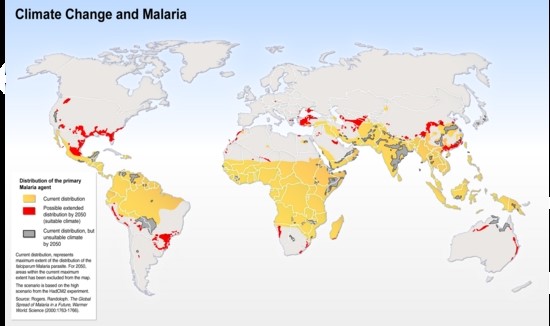
Canada even hypothesized that climate change would lead to three ways to increase the local risks of tick/mosquito-borne diseases.
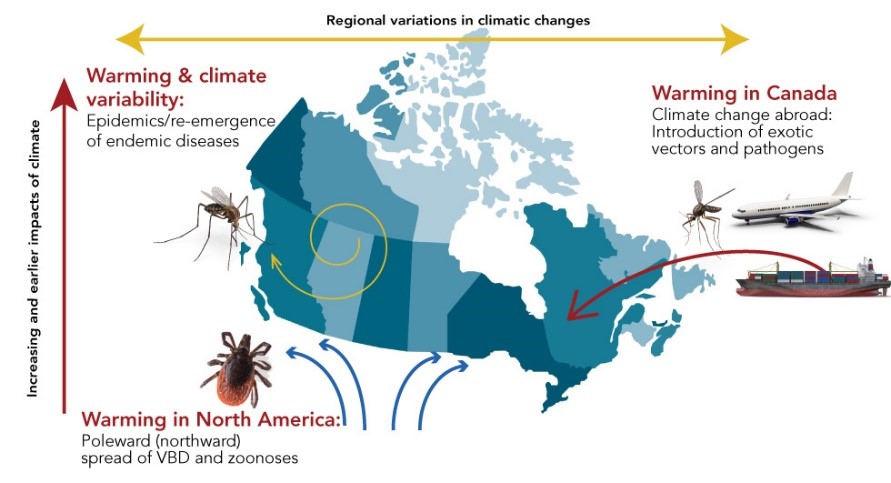
2. Globalization and Urbanization
Urbanization implies people's greater concentration and connectedness, which increases the speed at which new infections are spread. Globalization—the closer integration of the world economy—has facilitated pathogen spread among countries through the growth of trade and travel.
Dengue is the only significant global vector-borne disease for which the age-standardized DALY (Disability Adjusted Life Year) rate increased between 2007 and 2017, and it increased by 26%. Also, from the global spread map of dengue virus types from 1943-2013, dengue serotypes were found in different areas, and the distribution was constantly changing. These trends represent a continuation of the explosive expansion of dengue since the 1950s, driven by urbanization, globalization, and ineffective mosquito control.
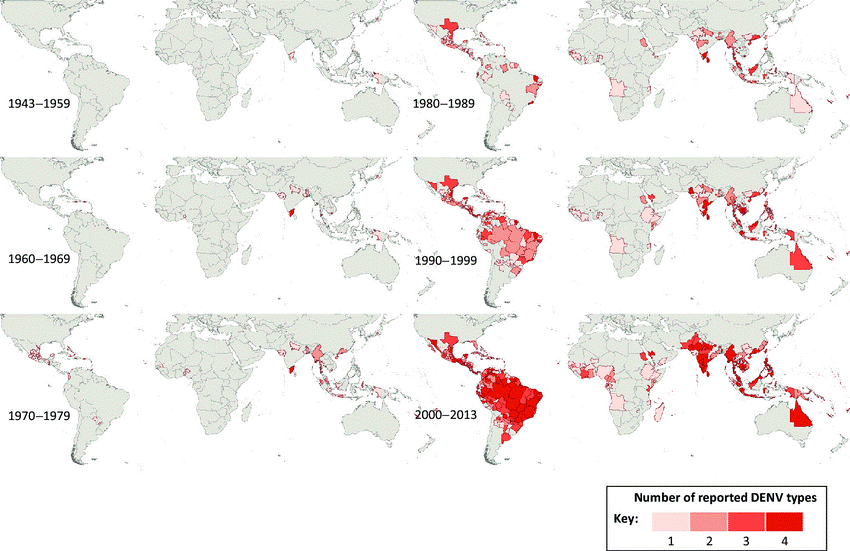
Other changes such as land-use changes and income growth will also change the global vector-borne distribution. These factors make the fight against vector-borne diseases still a considerable project.
In the face of coming events, we must intensify efforts to prevent and control vector-borne diseases and strengthen the diagnostic ability of early detection and rapid detection.
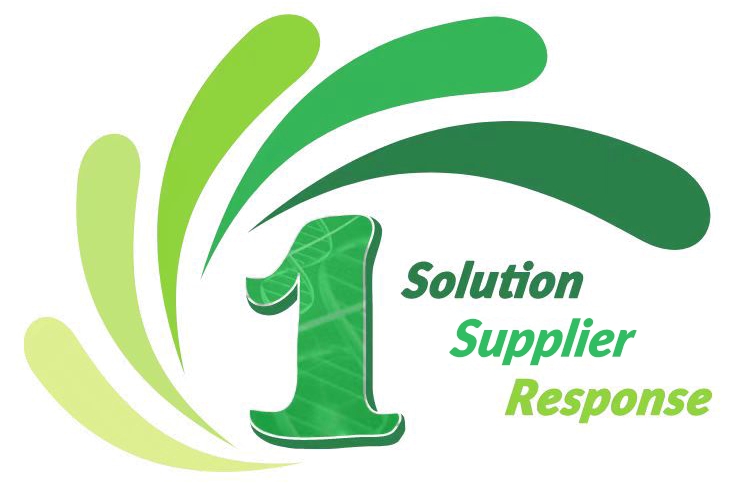
Bioperfectus provides a whole diagnostic solution with two platforms for vector-borne diseases, which will meet the laboratory demands of early detection and rapid detection.
The PCR platform consists of instruments and reagents covering different throughput demands. These PCR kits have other functions in vector-borne diseases’ early detection. One can identify zika, dengue, and chikungunya virus in one test. One can genotype the specific plasmodium parasite that causes different severity of malaria. Two of them will distinguish four dengue serotypes possible in a 4-channel PCR analyzer. Also, our PCR kits will help to independently detect zika, dengue, yellow fever virus, or plasmodium. Laboratories can make free combinations depending on the endemic diseases and genotyping demands.
We have established two panels in the RDTs platform to satisfy the clinical requirement of malaria and dengue detection in 15 minutes. We co-develop with the Jiangsu Institute of Parasitic Diseases (JIPD) for malaria detection and verified with clinical samples from JIPD. For more information about JIPD, please click here. We have kits to detect Pf, Pan(the combination of Pf, Pv, Pm, Po), or Pv. More importantly, we can detect HRP-deletion Pf; this will dramatically decrease the false-negative rate in Africa. For rapid dengue test, antigen and antibody detection is available, which will benefit in judging the infectious status. If the patient is in a secondary infection, he will need more clinical concern.
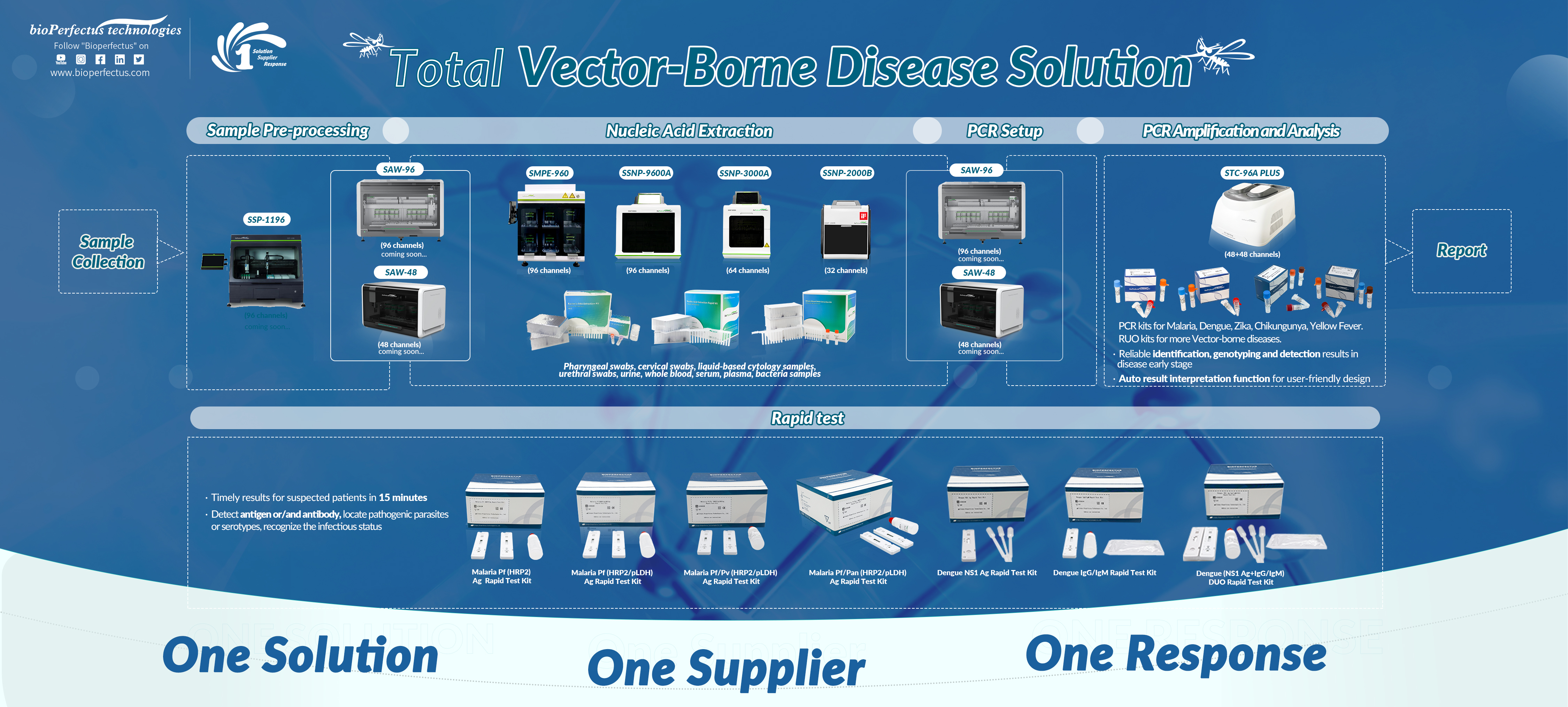
Vector-borne diseases continue to contribute significantly to the global burden of disease and cause epidemics that disrupt health security and cause broader socioeconomic impacts around the world. And we are here to appeal that all of us should co-together for a better and healthy future, starting with surveillance, diagnosis, and vector-control work.
Reference
https://www.who.int/news-room/fact-sheets/detail/vector-borne-diseases
http://en.whocc.jipd.com/
https://www.grida.no/resources/7718
DC Rinker, Pitts R J , Zwiebel L J . Disease vectors in the era of next generation sequencing[J]. Genome biology, 2016, 17(1):1-11.

